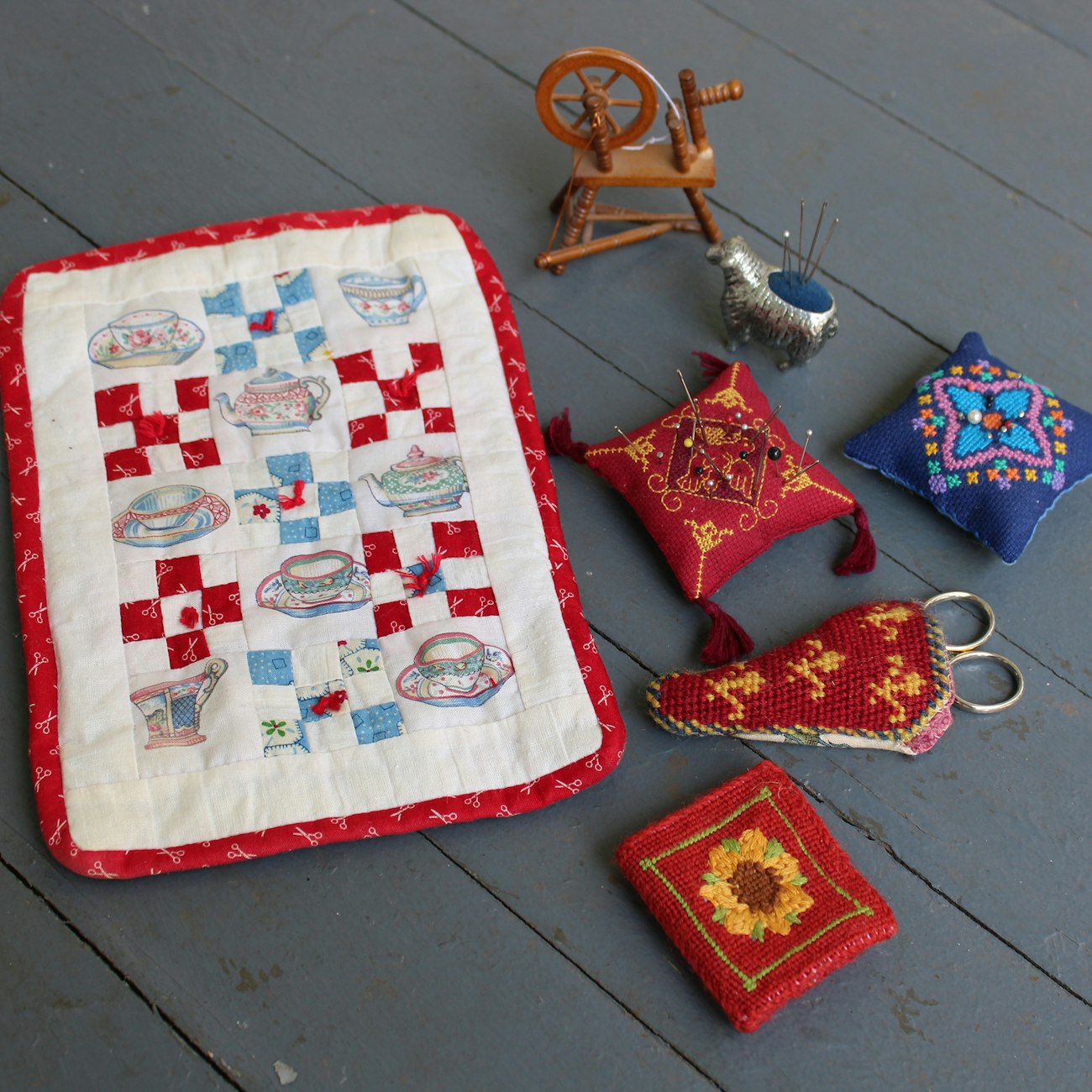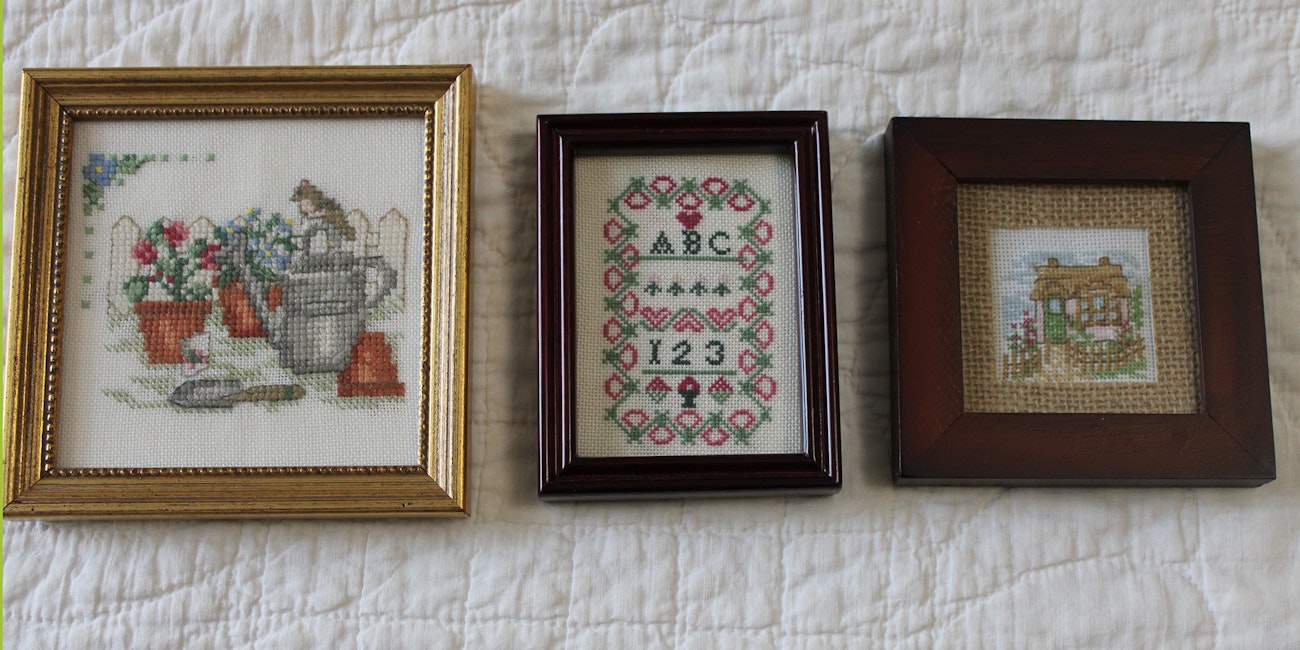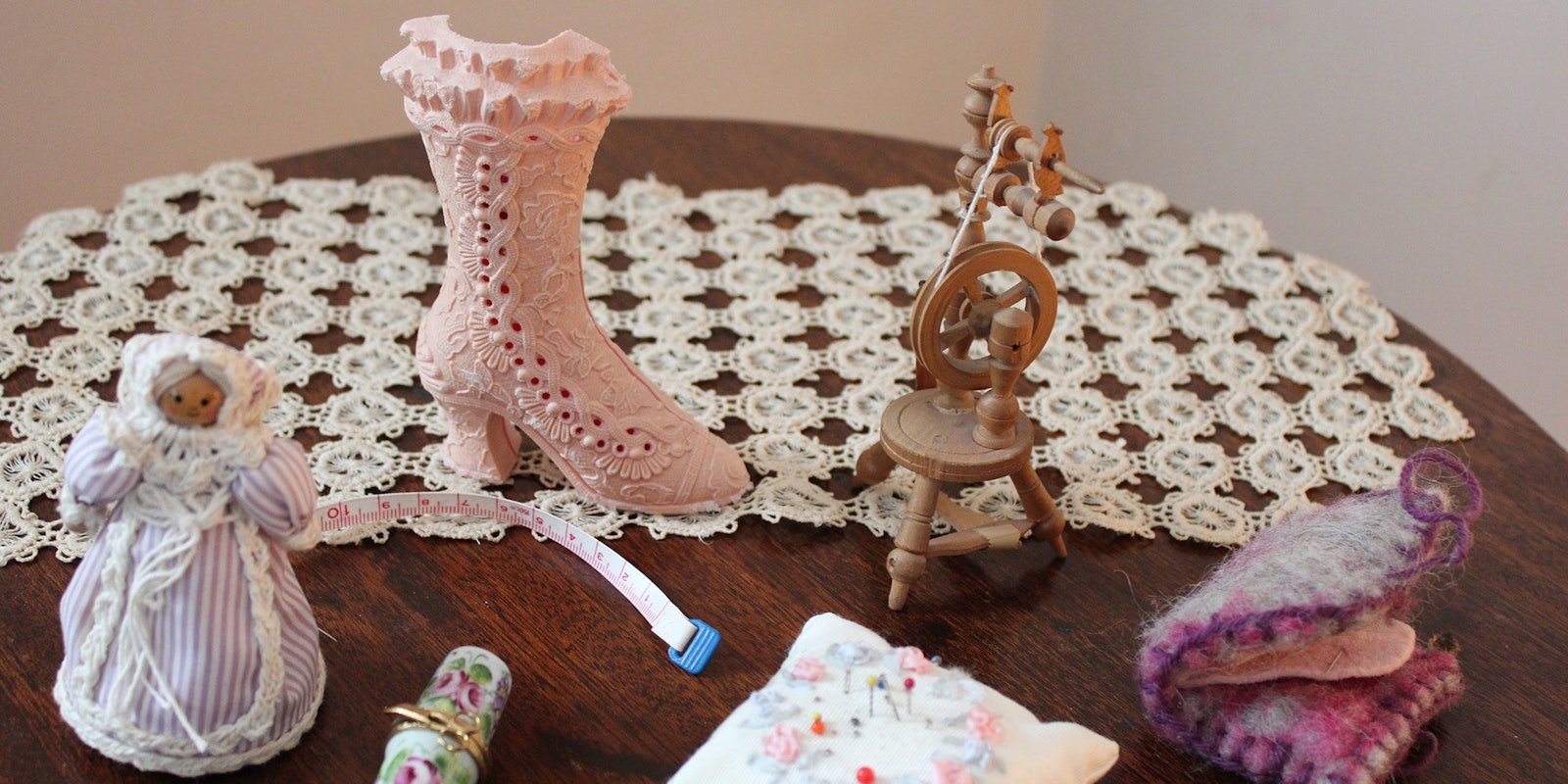When I was a preteen, in the late 1960s, my parents took me to a miniatures show. We started out together but soon separated, each of us drawn to the collections that interested us individually. My dad was mesmerized by toy soldiers, my mom loved sewing implements (mainly thimbles), and I was drawn to toys. I still remember a particular toy that had me and an older child entranced: a real walnut with a hinge propped open on a small stand with its contents, a set of tiny dominoes, strewn about. The dominoes didn’t look like they’d fit in the small nut, but the other child put them in and shut the walnut closed. “I’ll take it,” he said; money changed hands, and off went the smiling new owner with the coolest toy I’d ever seen.
Mad for Miniature Needlework Kits
Ever since that day, I’ve had a fascination with miniatures. Coupled with my love of needlework, most miniatures I own are needlework-related. I own needle cases, pincushions, miniature spinning wheels, and sewing-related charms on bracelets. But in the middle of my needlework life, around 1980, something happened that blended my two interests: several needlework publications from overseas started appearing in my local bookshop, and these new publications came with small kits and instructions attached to the outside of the magazines.
 Small quilt, mini spinning wheel, pewter sheep pincushion, red and blue cross stitched pillow pincushions, needlepoint scissor case, book-style embroidered/needlepointed needle case.
Small quilt, mini spinning wheel, pewter sheep pincushion, red and blue cross stitched pillow pincushions, needlepoint scissor case, book-style embroidered/needlepointed needle case.
I have never been one to design my own needlework, but I’m a sucker for a cute kit with everything included. Now I could make my own miniatures! I started purchasing these fairly expensive magazines whenever the kit appealed to me, and I’d faithfully make the included treasure.
The kits that intrigued me the most were cross-stitch or needlepoint. After many trips to the bookstore, I decided to splurge and subscribe. I started with my favorite overseas magazine and soon realized that I would have to wait for the lengthy delivery time, which was excruciating. The magazine would be in the bookstore before arriving at my home. But I still loved getting that sweet package of the magazine and kit delivered to my door.
 Three of Barbara’s completed cross-stitch projects.
Three of Barbara’s completed cross-stitch projects.
Many of the items I made became staples of the small sewing baskets that are placed around my house where I sit and in knitting bags that I carry on the go. They’ve been through decades of use, and I treasure them for the memories and their usefulness. (If I take a knitting bag to a coffee shop or a knitting group, it always includes a needle case—made from a kit—with all the necessary sewing implements inside.) Many kits I’ve completed are cross-stitch pictures or samplers. I have a collection that is all designs of sewing implements and one that is pictures of houses. I group these similar collections together on small wall spaces. I can’t imagine my home without these treasures on its walls. They are conversation starters, and even my grandsons find them fascinating and reexamine them on every visit. I love my small stitched projects.
Barbara Hurd is a knitwear designer and author who draws inspiration from all things needlework. During the pandemic, she found time to rediscover family heirloom needlework, quilts, and samplers. She also revived an old passion for playing the flute.

